
The Edwards Aquifer is one of the most prolific artesian aquifers in the world. Located on the eastern edge of the Edwards Plateau in the U.S. state of Texas, it is the source of drinking water for two million people, and is the primary water supply for agriculture and industry in the aquifer's region. Additionally, the Edwards Aquifer feeds the Comal and San Marcos Springs, provides springflow for recreational and downstream uses in the Nueces, San Antonio, Guadalupe, and San Marcos river basins, and is home to several unique and endangered species.
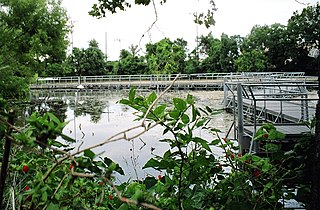
San Marcos Springs is the second largest natural cluster of springs in Texas. The springs are located in the city of San Marcos, Texas, about 30 miles (48 km) southwest of Austin and 46 miles (74 km) northeast of San Antonio.

The Georgetown salamander, also known as the San Gabriel Springs salamander, is a species of salamander in the family Plethodontidae. It is endemic to springs in Williamson County, Texas, near Lake Georgetown. It inhabits freshwater springs and, possibly, caves. It is threatened by habitat loss. Many of the springs where this species formerly lived have been destroyed by development, including creation of Lake Georgetown. The specific name refers to the few remaining remnants of habitat for this species.
Assiminea pecos is a rare species of snail in the family Assimineidae known by the common name Pecos assiminea. It is native to New Mexico and Texas in the United States. Specimens known from Mexico are now treated as members of a separate species, Assiminea cienegensis. The Pecos assiminea was federally listed as an endangered species of the United States in 2005.
Lirceus usdagalun is a rare species of crustacean known by the common name Lee County cave isopod. It is endemic to Virginia in the United States, where it is known from a single network of karst cave systems in Lee County. It is threatened by a number of processes. It is a federally listed endangered species of the United States, and is assessed as "endangered" by the International Union for Conservation of Nature.
Stygobromus hayi is a rare species of crustacean known by the common name Hay's spring amphipod. It is endemic to the District of Columbia in the United States, where it occurs only in Rock Creek, a tributary of the Potomac River. It is a federally listed endangered species, is listed as Endangered on the IUCN Red List, and as Critically Imperiled by NatureServe.
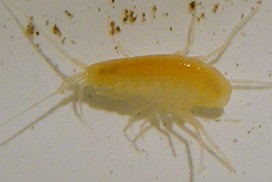
Stygobromus pecki, the Peck's cave amphipod, is a rare species of crustacean found in four cavern areas of southwestern Texas in the United States. It is a federally listed endangered species in the United States and is also listed as Endangered on the IUCN Red List. Because of the species' limited geographical distribution, not much information on S. pecki is known. As of April 2022, there is no available 5-year review, Species Status Assessment, or recovery plan for the species. However, the Edwards' Aquifer Habitat Conservation Program (EAHCP), with the support of the U.S. Fish and Wildlife Service (UFWS), has been attempting to further study and promote conservation of S. pecki.

The Kretschmarr Cave mold beetle is a small mold beetle.

Stygobromus kenki is a rare species of amphipod, a crustacean. Its common names include Kenk's amphipod, Rock Creek groundwater amphipod, and Rock Creek stygobromid.

Balcones Canyonlands is a national wildlife refuge located in the Texas Hill Country to the northwest of Lago Vista, Texas. The refuge was formed in 1992 to conserve habitat for two endangered songbirds, the golden-cheeked warbler and the black-capped vireo, and to preserve Texas Hill Country habitat for numerous other wildlife species. The refuge augments a similarly named preserve in Austin called the Balcones Canyonlands Preserve.
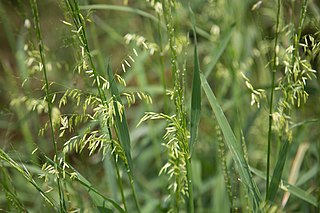
Zizania texana is a rare species of grass known by the common name Texas wild rice. It is endemic to Texas, where it is found only on the upper San Marcos River in Hays County. It is threatened by the loss and degradation of its habitat. It is a federally listed endangered species of the United States.

Heterelmis comalensis is a rare species of beetle known by the common name Comal Springs riffle beetle. It is endemic to Texas in the United States, where it occurs in only two springs. It is a federally listed endangered species of the United States.

The Tooth Cave ground beetle, Rhadine persephone, is an endemic beetle that lives only in karst caves in Texas. They are arthropods of the family Carabidae. The United States government considers these beetles endangered because they are only found in a single cave system. If these caves are destroyed, this beetle will likely go extinct. The cave system is currently threatened by pollution, urban development, and invasion by fire ants.

Texella reyesi is a rare species of arachnid known by the common name Bone Cave harvestman. It is endemic to Texas in the United States, where it lives in limestone caves in Travis and Williamson Counties. It is threatened by the loss of its habitat. It is a federally listed endangered species of the United States.
Cicurina vespera is a rare species of spider in the family Dictynidae known by the common name Government Canyon Bat Cave meshweaver. It is endemic to Texas in the United States, where it is known from only one cave in Bexar County. This is one of nine invertebrates endemic to the karst caves of Bexar County that were federally listed as endangered species in the year 2000.
Cicurina madla is a rare species of spider in the family Dictynidae known by the common name Madla Cave meshweaver. It is endemic to Texas, United States, where it is known to originate from only eight or nine caves in Bexar County. This is one of a small number of invertebrates endemic to the karst caves of Bexar County that were federally listed as endangered species in the year 2000. Another spider from the caves was described as Cicurina venii, and given the common name Braken Bat Cave meshweaver. In 2018, it was synonymized with C. madla.
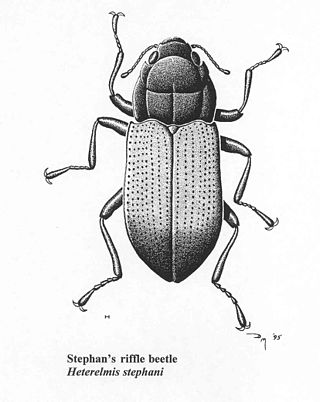
Heterelmis stephani was a rare species of aquatic beetle known by the common name Stephan's riffle beetle. It was endemic to Arizona in the United States, where it occurred in the Santa Rita Mountains before being declared presumed extinct. It was brown in color with small black dots on its wings.

The spring pygmy sunfish, Elassoma alabamae, is a species of pygmy sunfish endemic to springs in northern Alabama. It was historically known to occur in springs in North Alabama along the Tennessee River in Limestone and Lauderdale counties. The spring pygmy sunfish was first discovered in Cave Spring in Lauderdale County, Alabama in 1937 but in 1938, this site was flooded by the creation of the Pickwick Reservoir. The spring pygmy sunfish was considered extinct until its rediscovery in the Beaverdam Spring complex in 1973 by researchers from the University of Tennessee.
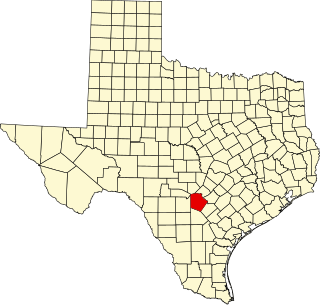
Rhadine infernalis is a species of troglobitic beetle of the family Carabidae. They are endemic to the county of Bexar, Texas. Within this county, R. infernalis has been found in 39 caves. There are 2 named subspecies of R. infernalis: R. infernalis infernalis and R. infernalis ewersi. There is a third possible subspecies that has not been officially described. R. infernalis was classified in 2000 as endangered under the IUCN Endangered Species Act of 1973, along with 8 other karst invertebrates in the same region. It has the widest known range of the endangered karst invertebrates.
Batrisodes venyivi, also known as Helotes mold beetle, is an eyeless beetle in the family Staphylinidae. They are found exclusively in the dark zones of caves in the Southwest region of Texas. More specifically, they have been found in eight caves throughout Bexar County, Texas. Similar species include the eight other Bexar County invertebrates, such as Rhadine exilis or Rhadine infernalis. All nine of these species are protected under the Endangered Species Act. Despite the efforts of a small number of researchers, the logistical challenges of accessing this habitat greatly limit the amount and type of information. Very little is known of the species’ behavior, population trends, or general ecology.
















